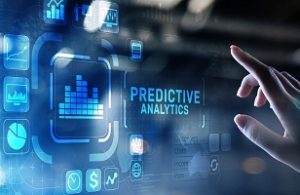
All of us want to make good decisions all of the time but how do we do it? We can take college courses in business management, or information technology, and attend decision-making seminars. Both produce positive results for managers and employees. Yet, in today’s business climate, this training is not good enough. A better approach is using data analytics to transform data into actionable insights. Contact ITI Technical College today for more information.
What Is Data Analytics
 Organizations can leverage their collected data for strategic decision-making advantages over their competition. Data analytics is defined as studying raw data to discover and extract meaningful patterns, reach conclusions, and support better decision-making. This approach goes along with the old saying “It was right under our noses.” The central idea is to help business managers uncover hidden trends from the data.
Organizations can leverage their collected data for strategic decision-making advantages over their competition. Data analytics is defined as studying raw data to discover and extract meaningful patterns, reach conclusions, and support better decision-making. This approach goes along with the old saying “It was right under our noses.” The central idea is to help business managers uncover hidden trends from the data.
Data analysis is not the same thing as data analytics. Data analysis is a process of breaking down a set of data into its component parts, analyzing each part, and determining how they relate to each other. The analysis looks toward the past, while analytics looks toward the future. Data analysis is then considered a subset of data analytics.
Data analytics allows us to find patterns and make decisions on a higher level than we normally do. Using it gives us greater insight into data patterns we may normally overlook. We can make faster and more informed decisions with it than without it and take strategic actions.
Benefits Of Data Analytics
Unused meaningful data is a wasted organizational asset. The key is turning data insights into actions that benefit the organization. The many benefits of data analytics include:
- Improve Decision-Making – By leveraging historical and current data, predictive modeling aids organizations with forecasting and predicting trends and their outcomes. It also helps organizations lower their risk levels in the marketplace.
- Drive Innovation – By using modern analyzing tools, companies can convert complex data sets into comprehensive and understandable representations. The results aid in identifying opportunities, developing new products and services, and improving existing products and services. A culture of innovation is fostered when used regularly.
- Increase Operation Efficiency – Managers can use data insights and patterns to increase efficiency by optimizing resources, and processes, and identifying areas for improvement. Employees make better use of their time and save the company money.
- Gain More Competitiveness – These three benefits translate into a competitive edge in the domestic and international business environment. It helps companies stay alive and drive growth.
A few examples of data analytics benefits are identifying new customers, better allocation of resources, and improving business processes. Companies are in a better position to navigate challenges and capitalize on new opportunities.
| “A better approach is using data analytics to transform data into actionable insights.” |
How To Turn Data Into Actionable Insights
 Making sense of an organization’s data means analyzing and driving meaningful data to make powerful decisions. Here are some ways managers can create actionable insights:
Making sense of an organization’s data means analyzing and driving meaningful data to make powerful decisions. Here are some ways managers can create actionable insights:
- Use the right data sets and recognize patterns from them. Make sure you are measuring the right data to reach your current objectives. Learn to discover useful patterns and their potential implications to maximize their effectiveness.
- Ask meaningful questions and communicate with your team. Train employees to ask a lot of relevant questions to uncover insights. Brainstorm and communicate your thoughts with the entire team to retain the best questions.
- Categorize data and make clear visualizations so the team can dig deeper to find patterns and make sound decisions. Use clear visualizations to convey your message to other team members to reach a faster understanding.
- Discover the data set’s meaning and make a plan. What do the data and the numbers really mean in a data set? Create a plan from the data to optimize its future use and make sure everyone understands the plan.
- Reach a hypothesis and add data sources. Reach a clear hypothesis to create an effective marketing plan. Integrate your data sources into the plan to make better and faster decisions. Test the hypothesis to see that it works, and revise it if it does not.
All the above steps create actionable insights for organizational success. For the best results in their use, the independence of different departments within the organization must be minimized. Create a culture without blind spots and let information flow freely from one department to another.
Think communication and not confronting or competing within the company. Hire and organize the right team to accomplish these objectives. Use your data analytics to the fullest extent and you will see a stronger company emerging. Enroll in an information technology program and earn your associate degree to begin your career in this industry.
For more information about graduation rates, the median debt of students who completed the program, and other important information, please visit our website: https://iticollege.edu/disclosures/




